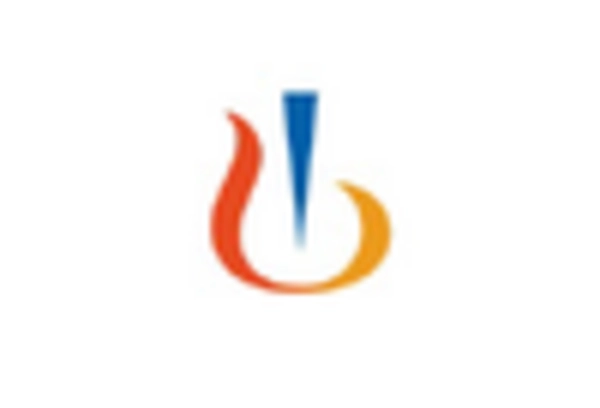Rising Prevalence of Eye Disorders
The increasing incidence of eye disorders, particularly age-related macular degeneration (AMD), is a primary driver of the Choroidal Neovascularization Market. As populations age, the prevalence of AMD and other retinal diseases rises, leading to a greater demand for effective treatment options. According to recent estimates, AMD affects millions worldwide, with projections indicating that the number of affected individuals could reach 288 million by 2040. This surge in cases necessitates innovative therapies and interventions, thereby propelling the growth of the Choroidal Neovascularization Market. Furthermore, the growing awareness of eye health and the importance of early diagnosis contribute to the rising demand for specialized treatments, creating a robust market environment for stakeholders involved in this sector.
Advancements in Diagnostic Technologies
Technological advancements in diagnostic tools are significantly influencing the Choroidal Neovascularization Market. Enhanced imaging techniques, such as optical coherence tomography (OCT) and fundus photography, allow for earlier and more accurate detection of choroidal neovascularization. These innovations facilitate timely intervention, which is crucial for improving patient outcomes. The market for diagnostic devices is projected to grow, with estimates suggesting a compound annual growth rate (CAGR) of over 6% in the coming years. As healthcare providers increasingly adopt these advanced diagnostic technologies, the demand for subsequent therapeutic interventions is likely to rise, further stimulating the Choroidal Neovascularization Market. This trend underscores the importance of integrating cutting-edge technology into clinical practice to enhance patient care.
Growing Awareness and Education Initiatives
The rise in awareness and education initiatives regarding eye health is a crucial driver for the Choroidal Neovascularization Market. Organizations and healthcare providers are increasingly focusing on educating the public about the risks associated with retinal diseases and the importance of regular eye examinations. This heightened awareness is likely to lead to earlier diagnosis and treatment of choroidal neovascularization, thereby expanding the market. Campaigns aimed at promoting eye health have shown positive results, with surveys indicating that individuals who are informed about eye conditions are more likely to seek medical advice. Consequently, this trend is expected to bolster the demand for therapies and interventions within the Choroidal Neovascularization Market, creating a more informed patient population.
Regulatory Support for Innovative Treatments
Regulatory bodies are increasingly providing support for the development and approval of innovative treatments within the Choroidal Neovascularization Market. Initiatives aimed at expediting the review process for new therapies, such as breakthrough therapy designations and fast-track approvals, are encouraging pharmaceutical companies to invest in the development of novel solutions. This regulatory environment fosters innovation and enhances the availability of effective treatments for patients suffering from choroidal neovascularization. Recent data suggests that the approval timelines for new ophthalmic drugs have decreased, allowing for quicker access to therapies. As regulatory support continues to evolve, it is likely to stimulate growth in the Choroidal Neovascularization Market, ultimately benefiting patients and healthcare providers.
Increased Investment in Research and Development
The Choroidal Neovascularization Market is experiencing a surge in investment directed towards research and development (R&D) initiatives. Pharmaceutical companies and biotechnology firms are allocating substantial resources to discover and develop novel therapies targeting choroidal neovascularization. This focus on R&D is driven by the need for more effective treatments that can address the underlying causes of retinal diseases. Recent reports indicate that global spending on R&D in the pharmaceutical sector has reached approximately 200 billion, with a significant portion dedicated to ophthalmic research. As new therapies emerge from these investments, they are expected to enhance treatment options available in the Choroidal Neovascularization Market, ultimately benefiting patients and healthcare providers alike.


















Leave a Comment